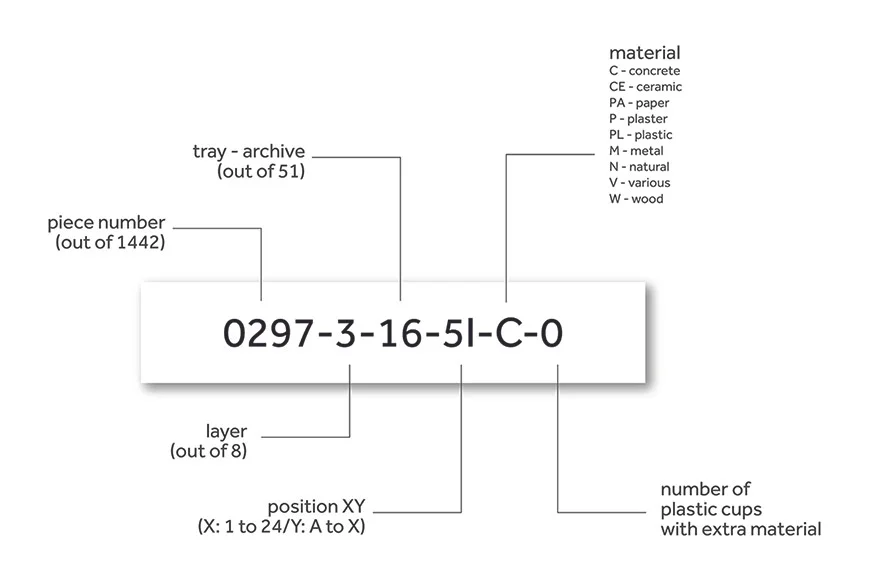Archiving Cataloging
Archiving & Cataloging
Each of the 1442 pieces was catalogued by taking pictures of each one separately and by developing a code system to identify them.
“The way in which museums have classified objects and the connection between cataloguing objects and people is in itself a power issue. We cannot go on doing things the way they have been done without asking ourselves what ideology we are reproducing with these routines. Working with collections must be a dynamic process, including many voices and diverse knowledge, without ranking.”
Adriana Muñoz, curator of the World Culture Museum in Gothenburg
According to Adriana Muñoz, the creation of World Culture Museum in Gothenburg had the idea that non-european objects could help in the integration of non-european immigrants. This idea however reinforces the dichotomy between we and the others, a concept that have been guiding cultural heritage discourse and practices around collecting, labelling, classifying, interpreting and exhibiting material that tell stories about people.3 This dichotomy, known as well as clash-of-civilization argument, is a dangerous and superficial argument that “sees separated and self-contained areas in the world rather than their intertwined histories”. Indeed, this contrast between “our values” and “their values” is related to the destruction of cultural heritage and also to the war itself.4
The narrative that framed the destruction of Palmyra and Mosul, for instance, were simplified by this dichotomy: the international community protecting “universal values” in one side and the “Islamic world” destroying them in the other.5
To criticize meaningfully the destruction of cultural heritage in Syria, Iraq and anywhere, it is necessary first to criticize the institutions and the criteria used in cultural heritage practice. Because these criteria have been “constructed along with the same geopolitical favoritisms and [...] by the same state apparatus that leads to war”.6
3. Adriana Muñoz, From Curiosa to World Culture. The History of the Latin American Collections at the Museum of World Culture in Sweden, (Gothenburg: Department of Historical Studies, University of Gothenburg, 2011)
4. Esra Akcan, 'Modernity as Perpetual War or Perpetual Peace?', Aggregate, http://we-aggregate.org/piece/modernity-as-perpetual-war-or-perpetualpeace
5. Pamela Karimi and Nasser Rabbat,'The Demise and Afterlife of Artifacts', Aggregate, http://we-aggregate.org/piece/the-demise-and-afterlife-of-artifacts
6. Esra Akcan






